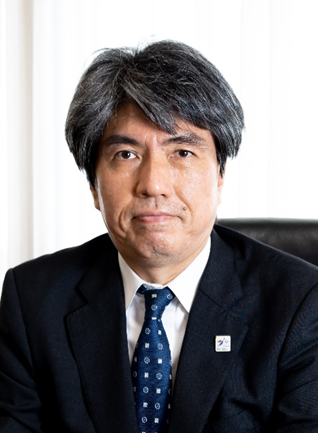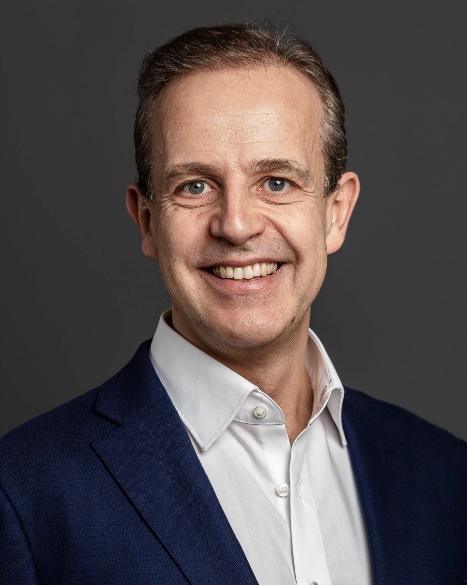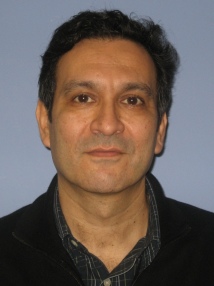
Speaker: Prof. Sjoerd W. Rienstra, Eindhoven University of Technology, Netherlands
Date/Time: Thursday, 20th May 2021, 3:00 pm (GMT+8)
Title: Sound Propagation in Shear Flow – Adiabatic Invariants of Slowly Varying Modes
Abstract:Adiabatic invariants are the holy grail in a WKB analysis of waves in a slowly varying medium. If one exists, it serves as an exact integral for the slowly varying mplitude of the wave. This is no exception for acoustic modes in a slowly varying duct with slowly varying mean flow.
Adiabatic invariants are invariants under slow variation, not any variation. Their existence ensues sometimes, but not only, from the more stringent conservation of energy. Acoustic energy in mean flow is not always conserved: it is conserved in potential flow, but not in vortical (i.e. shear) flow where the acoustic field exchanges energy with the mean flow. Adiabatic invariants are therefore common for modes in slowly varying potential flows, but so far unknown in sheared flows.
We found that: (i) in 2D shear flow the modes satisfy in general an incomplete adiabatic invariant; (ii) this reduces to a complete one for linear shear flow. This result makes the WKB approximation for a mode in a slowly varying duct almost as simple as the solution for a mode in a straight duct.
Papers in support of Prof. Rienstra's webinar: https://doi.org/10.1017/jfm.2020.687
Prof. Rienstra's homepage: https://www.win.tue.nl/~sjoerdr/

Speaker: Prof. Genta Kawahara, Osaka University, Japan
Date/Time: Tuesday, 25th May 2021, 10:00 am (GMT+8)
Title: Ultimate heat transfer in convective and sheared turbulence
Abstract:Direct numerical simulations have been performed for turbulent heat transfer in thermal convection and shear flow between parallel permeable walls, on which the transpiration velocity is assumed to be proportional to the local pressure fluctuations (Jimenez et al. 2001 J. Fluid Mech. 442, 89-117). Turbulent heat transfer has been found to be substantially enhanced by the appearance of large-scale turbulence structures (large-scale thermal plumes in convection or large-scale spanwise rolls in shear flow) arising from the wall permeability. At high Rayleigh numbers or high Reynolds numbers we have achieved the ultimate heat transfer represented by a wall heat flux being independent of thermal conductivity, although the heat transfer on the wall is dominated by thermal conduction. The key to the achievement of the ultimate heat transfer is interpreted in terms of significant heat transfer enhancement by large-scale intense turbulence with the length scale of the order of the wall distance and with the velocity scale comparable to the buoyancy-induced terminal velocity in convection or the bulk-mean velocity in shear flow without flow separation from the permeable walls.
Papers in support of Prof. Kawahara's webinar: https://doi.org/10.1017/jfm.2020.867
Prof. Kawahara's homepage: https://rd.iai.osaka-u.ac.jp/en/187bee8bc45e082e.html

Speaker: Prof. Carlo L. Bottasso, TUM, Germany
Date/Time: Wednesday, 2nd June 2021, 4:00 pm (GMT+8)
Title: Understanding and controlling wind farm flows
Abstract:Wakes produced by upstream wind turbines have a profound influence on the performance of downstream machines. In fact, compared to clean isolated conditions, waked turbines experience a lower power output and increased loading, which in turn create cascading effects on operation & maintenance (O&M) and lifetime. Understanding and affecting wakes are extremely challenging scientific problems with very practical and concrete implications clearly felt by industry. Probably one of the most direct indications of the impact of wakes outside of the scientific literature is given by the press announcement issued in October 2019 by Ørsted (formerly DONG), the largest energy company in Denmark. In this striking announcement, Ørsted warned investors that it was not able to meet its long-term financial targets because “... of the negative impact … across our asset portfolio of … wake effects”. In addition, Ørsted stated that “… wake effects is likely to be an industry-wide issue”. This announcement had a major impact on the scientific and technical community, and sounds as a wake-up call: wake effects are one of the main priorities that need to be faced in the field of wind energy.
However, the effects of wakes go well beyond power capture and loading. In fact, with an increased penetration of wind in the energy mix, it has become necessary for wind energy systems to provide increased flexibility and services to the grid, including active power control, the provision of reserves, and the integration with storage and other power generation units. Here again, understanding and controlling wakes plays a central role in the ability to deliver such services, which build on complex behaviors such as maintaining enough reserves to hedge against wind fluctuations, or distributing fatigue damage and/or actuator duty cycle according to the status of the individual assets and their components.
In this talk we will review the recent progress in the understanding and modeling of wakes, and the latest achievements in the field of wind farm flow control. We will take the opportunity offered by some of these topics to present highlights from the work developed by the Wind Energy Institute at TUM, spanning from to digital technologies for smart operation of turbines and farms, to validation and testing.
Prof. Bottasso's homepage: https://www.professoren.tum.de/en/bottasso-carlo-l

Speaker: Prof. George Haller, ETH Zurich, Switzerland
Date/Time: Thursday, 3rd June 2021, 4:00 pm (GMT+8)
Title: Material Barriers to the Transport of Momentum and Vorticity in Turbulence
Abstract:I will give an overview of the type of mathematics that needs to be invoked to study nonlinear waves in small scale geometries. Applied mathematicians are very familiar with large scale waves, such as water waves, and the activities that emanate from familiar models like the celebrated Kortweg de-Vries equation (a google search of “Kortweg de-Vries” comes up with 650,000 hits!). At large scales things are gravity driven and viscosity plays a secondary role and can be ignored. On the microscale, however, gravity is typically diminished and viscosity rules. Interfaces between immiscible fluids (i.e. waves) are quite happy to stay uniform and trundle along in their viscous morass. To do engineering on the microscope we need to drive them out of their equilibrium. One way to do this is by using external electric or magnetic fields, and I will begin with an overview of the mathematical models that emerge from such interventions - they involve a crucial coupling between the Navier-Stokes equations and the Maxwell equations in the right limit. The result is a host of PDEs that are derived asymptotically. Interestingly, these PDEs can produce chaotic solutions (we have rigorous proofs of this) even at zero Reynolds numbers. After deriving some of the models I will present computations of their solutions (mostly in the form of movies) and also address theoretically the problem of control and optimal control of such systems showing that this is possible and opens a gateway to useful physical exploitations.
Prof. Haller's homepage: http://www.georgehaller.com/about/index.html

Speaker: Prof. Demetrios Papageorgiou, Imperial College London, UK
Date/Time: Tuesday, 8th June 2021, 6:30 pm (GMT+8)
Title: Waves on the Microscale: Order, Chaos and its Control
Abstract:I will give an overview of the type of mathematics that needs to be invoked to study nonlinear waves in small scale geometries. Applied mathematicians are very familiar with large scale waves, such as water waves, and the activities that emanate from familiar models like the celebrated Kortweg de-Vries equation (a google search of “Kortweg de-Vries” comes up with 650,000 hits!). At large scales things are gravity driven and viscosity plays a secondary role and can be ignored. On the microscale, however, gravity’s gravity is typically diminished and viscosity rules. Interfaces between immiscible fluids (i.e. waves) are quite happy to stay uniform and trundle along in their viscous morass. To do engineering on the microscope we need to drive them out of their equilibrium. One way to do this is by using external electric or magnetic fields, and I will begin with an overview of the mathematical models that emerge from such interventions - they involve a crucial coupling between the Navier-Stokes equations and the Maxwell equations in the right limit. The result is a host of PDEs that are derived asymptotically. Interestingly, these PDEs can produce chaotic solutions (we have rigorous proofs of this) even at zero Reynolds numbers. After deriving some of the models I will present computations of their solutions (mostly in the form of movies) and also address theoretically the problem of control and optimal control of such systems showing that this is possible and opens a gateway to useful physical exploitations.
Prof. Papageorgiou's homepage: https://www.imperial.ac.uk/people/d.papageorgiou

Speaker: Prof. Jan Kleissl, University of California, San Diego, USA
Date/Time: Thursday, 10th June 2021, 9:00 am (GMT+8)
Title: Urban Microclimatology: Implications of Realistic Urban Heating on Wind Flow and Dispersion
Abstract:As urbanization progresses, microclimate modifications are also aggravated, and more comprehensive and advanced methods are required to analyze the increasing environmental concerns. Among various factors that alter urban environments from undisturbed climates, street level air pollution due to vehicular exhausts is of major concern and is significantly affected by atmospheric motion and stability. Thermal forcing is shown to play an important role in determining flow patterns and pollutant dispersion in built environments, yet numerical studies of dispersion at microscale in urban areas are limited to simplified and uniform thermal conditions and the analyses on the effect of realistic surface heating are scarce.
To address this shortcoming, a detailed indoor-outdoor building energy model is employed to compute heat fluxes from street and building surfaces, which are then used as boundary conditiion for a Large-Eddy Simulation model. In comparison with previous studies, our model considers the transient non-uniform surface heating caused by solar insolation and inter-building shadowing, while coupling the indoor-outdoor heat transfer, flow field and passive pollution dispersion. Series of fluid flow and thermal field simulations are then performed for an idealized, compact mid-rise urban environment, and the pollution dispersion as well as turbulent exchange behavior in and above buildings are investigated. Additionally, a potentially universal characterization method of the flow field under realistic surface heating is evaluated, which aims to expand the results into a wider range of scenarios and investigate the potential correlations for various parameters of interest.
Prof. Kleissl's homepage: https://cer.ucsd.edu/_profile-pages/kleissl.html

Speaker: Dr. Baole Wen, University of Michigan, Ann Arbor, USA
Date/Time: Tuesday, 15th June 2021
Title: Asymptotic Transport in Strongly Nonlinear Rayleigh–Bénard Convection
Abstract:
Prof. Doering's homepage: https://lsa.umich.edu/cscs/people/core-faculty/doering.html
Dr. Wen's homepage: https://lsa.umich.edu/math/people/postdoc-faculty/baolew.html